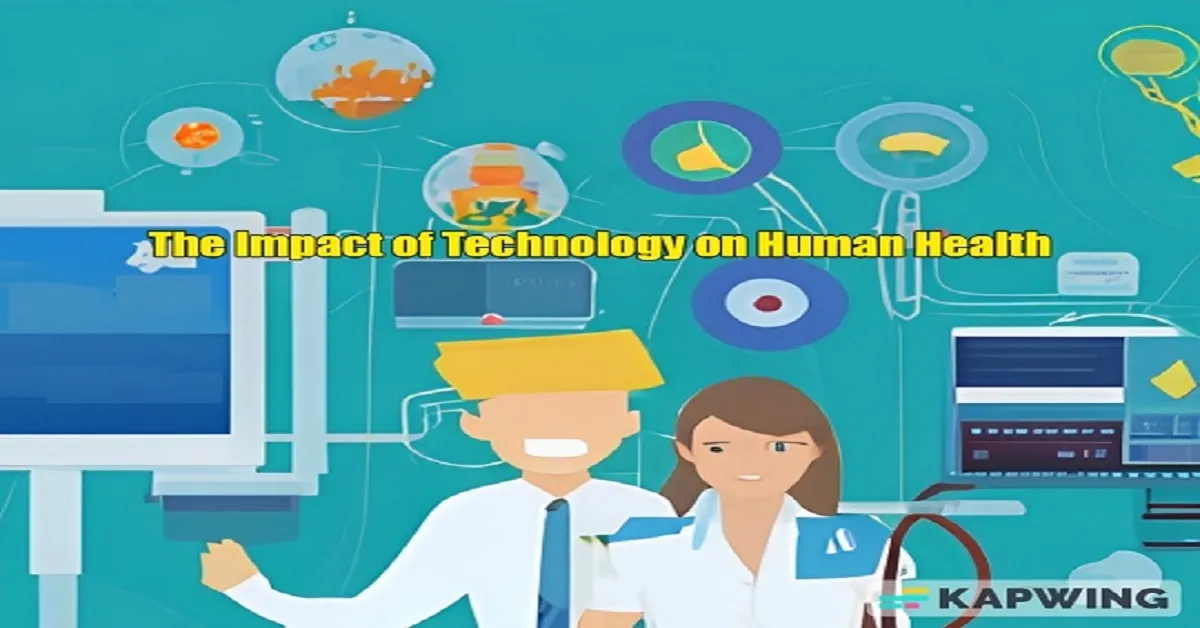The Side Effects of Technology on Human Health
Technology has revolutionized the way we live, bringing convenience, connectivity, and efficiency to our fingertips. However, as the prevalence of technology increases in our daily lives, it’s essential to recognize and understand the potential side effects it can have on our physical and mental well-being. From the impact on our bodies to the effects on our relationships and the environment, technology’s side effects warrant careful consideration.
Impact of Technology on Physical Health
Sedentary Lifestyle and Obesity
The convenience of technology has led to a more sedentary lifestyle for many individuals. With the rise of smartphones, computers, and other devices, physical activity has taken a back seat, resulting in an increased risk of obesity and related health problems. Prolonged periods of sitting and reduced exercise contribute to weight gain and metabolic disorders.
Musculoskeletal Disorders
The repetitive use of technology, particularly improper posture during prolonged periods of usage, can lead to musculoskeletal disorders. Conditions like carpal tunnel syndrome, neck and back pain, and eyestrain are common consequences of poor ergonomics and excessive screen time.
Vision Problems
Staring at screens for extended periods can strain our eyes and lead to various vision problems. Digital eye strain, dry eyes, blurred vision, and headaches are frequent complaints among heavy technology users. The blue light emitted by screens can disrupt sleep patterns and negatively impact overall eye health.
Insomnia and Sleep Disorders
The use of technology before bedtime can disrupt sleep patterns and contribute to insomnia and sleep disorders. The blue light from screens suppresses the production of melatonin, a hormone that regulates sleep, leading to difficulties in falling asleep and achieving restful sleep.
Effects of Technology on Mental Health
Social Isolation and Loneliness
While technology connects us virtually, it can also contribute to social isolation and loneliness. Excessive reliance on social media and online interactions can lead to a lack of genuine human connection. The absence of face-to-face interactions and physical presence can impact mental well-being and contribute to feelings of loneliness and depression.
Addiction and Dependency
Technology, particularly smartphones and social media, has the potential to be highly addictive. The constant need for notifications, the fear of missing out (FOMO), and the instant gratification provided by technology can create dependency and compulsive behaviors. Technology addiction can have severe consequences on mental health and interpersonal relationships.
Increased Stress and Anxiety
The constant exposure to information, social pressures, and the expectation of instant availability can contribute to increased stress and anxiety. The fear of being disconnected, overwhelmed by the information overload, and the pressure to always be present and responsive can take a toll on mental well-being.
Impacts on Cognitive Abilities
While technology has undoubtedly improved access to information, it has also altered our cognitive processes. Reliance on search engines and instant answers can reduce critical thinking skills, memory retention, and problem-solving abilities. Moreover, the constant multitasking encouraged by technology can lead to decreased focus and cognitive overload.
Negative Impact on Relationships
Decreased Face-to-Face Interaction
Technology can inadvertently reduce face-to-face interaction, impacting the quality and depth of relationships. Excessive screen time and reliance on digital communication can diminish opportunities for in-person connections, leading to a decline in emotional intimacy and social bonds.
Communication Challenges
The reliance on digital communication channels has its drawbacks. Misinterpretation of messages, lack of non-verbal cues, and reduced emotional connection can hinder effective communication. Digital conversations often lack the nuances and depth that come with face-to-face interactions, potentially leading to misunderstandings and conflicts.
Distraction and Disconnection
Technology’s constant presence can result in distraction and disconnection in personal relationships. Engaging with screens instead of being fully present during social interactions can lead to a sense of detachment and disengagement. This distraction can negatively impact relationship dynamics and hinder meaningful connections.
Environmental Concerns
Electronic Waste
The rapid advancement of technology has led to shorter product lifecycles, resulting in a significant increase in electronic waste. Discarded devices contribute to pollution, as hazardous materials present in electronic components can leach into the environment. Proper e-waste management and recycling initiatives are crucial to mitigate these environmental concerns.
Energy Consumption
The energy required to power our devices and support the vast digital infrastructure has a significant environmental impact. Data centers, servers, and the energy demands of manufacturing and operating devices contribute to carbon emissions and increased energy consumption. Transitioning to energy-efficient technologies and promoting sustainable practices can help reduce this environmental burden.
Pollution and Emissions
The manufacturing processes associated with technology, including the extraction of raw materials and the production of electronics, generate pollution and greenhouse gas emissions. The disposal of electronic waste also poses environmental risks, further contributing to pollution. It is essential to promote eco-friendly manufacturing processes and responsible disposal methods to minimize these harmful effects.
Strategies for Mitigating the Side Effects
To minimize the side effects of technology on human health, several strategies can be adopted:
Balancing Technology Use
Finding a balance between technology use and other activities is crucial. Setting aside dedicated time for physical exercise, hobbies, and face-to-face interactions can help reduce the negative impact of excessive technology usage.
Setting Boundaries and Time Limits
Establishing clear boundaries and time limits for technology usage can help prevent overreliance and addiction. Designating technology-free zones in certain areas of the home, such as bedrooms or mealtime areas, can foster healthier habits and promote better relationships.
Practicing Digital Detox
Taking regular breaks from technology, such as weekends or vacations, can be beneficial for mental well-being. Engaging in activities that promote relaxation, mindfulness, and connection with nature can help restore balance and reduce the adverse effects of technology.
Incorporating Physical Activity
Integrating physical activity into daily routines is essential for counteracting the sedentary nature of technology use. Regular exercise not only improves physical health but also has positive effects on mental well-being, reducing stress and improving sleep.
Conclusion
While technology brings numerous benefits, it is crucial to be aware of its potential side effects on human health. From physical ailments to mental health issues and environmental concerns, the impact of technology on our well-being is multi-faceted. By adopting a mindful approach to technology use, setting boundaries, and prioritizing our physical and mental health, we can mitigate the negative consequences and foster a healthier relationship with technology.
FAQs
-
Can technology usage cause physical health problems?
Yes, excessive technology usage can lead to physical health problems such as obesity, musculoskeletal disorders, vision problems, and sleep disorders. -
How does excessive screen time affect mental health?
Excessive screen time can contribute to social isolation, addiction, increased stress and anxiety, and reduced cognitive abilities. -
What are the signs of technology addiction?
Signs of technology addiction include a constant need for device usage, withdrawal symptoms when not using technology, neglecting responsibilities, and a negative impact on relationships. -
What can individuals do to maintain a healthy relationship with technology?
Individuals can maintain a healthy relationship with technology by balancing usage, setting boundaries, practicing digital detox, and incorporating physical activity. -
What are some eco-friendly technology practices?
Eco-friendly technology practices include proper e-waste management, using energy-efficient devices, and promoting sustainable manufacturing and disposal methods.




